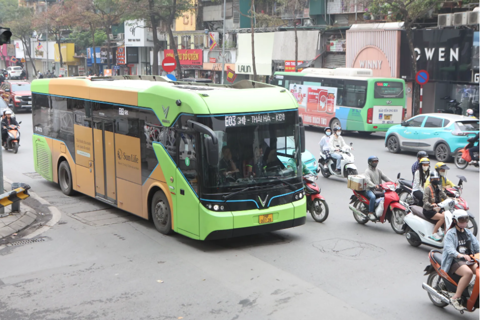Hanoi
Ngo Quyen Temple and Mausoleum in Hanoi
Jan 08, 2019 / 11:27 PM
King Ngo Quyen, famous for his historic Bach Dang victory in 938, expelled the South Han troops from the border, opening a new era of independence and self-reliance for the Vietnamese people.
In Duong Lam ancient village in Son Tay, Hanoi, tourists are recommended to visit the temple and mausoleum of Ngo Quyen, which have been classified by the State a national historical-cultural relic, where the first king of independent Vietnam rests.

Not only was it the first village in Vietnam to be granted the Historical Cultural Relics status in 2006, but Duong Lam is also known as the land of the spiritual pilgrimage, the only place being "one hometown of two kings: Phung Hung and Ngo Quyen.”
King Ngo Quyen, famous for his historic Bach Dang victory in 938, expelled the South Han troops from the border, opening a new era of independence and self-reliance for the Vietnamese people.
The temple and the mausoleum of Ngo Quyen in Duong Lam ancient village were built on a high hill, named Cam hill, facing east. The temple was built at the top, about 100m away from the mausoleum. In front of the mausoleum there is a large field, laying between the two hillsides. On this ground, legend says that it is where the young Ngo Quyen often with his friends fed buffaloes, and practiced martial arts. This is probably the most beautiful location of Duong Lam hamlet.
The Ngo Quyen Temple was built long ago and has been restored many times. The most recent remodeling was under the reign of Emperor Tu Duc (1848 - 1883). The temple is quite small, including: Nghi Mon (main gate), Ta Mac (left curtain), Huu Mac (right curtain), Dai Bai (Tien Duong – front chamber) and back chamber.
It is built of brick, and surrounded by a high wall. The main chamber is a 5-storey house, with wooden frame, and expresses mainly durability and sanctity.
At present, the main chamber is also used as a place to display the victory in Bach Dang River and the feat of Ngo Quyen. The back chamber comprises of 3 compartments, the wooden frame is decorated with dragon, flower, and leaf, etc. The statue of Ngo Quyen lies in the middle.
The mausoleum of King Ngo Quyen was built in the 27th year of Tu Duc Reign (1874), its roof is 1.5m high.

In particular, in the temple complex, 18 streblus asper trees - the place where Ngo Quyen tied his elephants and horses - have been recognized as "heritage trees" at the national level.
Every year, on the 14th day of second month of the Lunar Calendar (the anniversary of Ngo Quyen's death), the people of the region come here to show their gratitude to the King, the founding father of Vietnam’s independence, ending more than 1,000 years of Chinese domination, opening a new era of independence and autonomy for the history of the nation.

King Ngo Quyen, famous for his historic Bach Dang victory in 938, expelled the South Han troops from the border, opening a new era of independence and self-reliance for the Vietnamese people.
The temple and the mausoleum of Ngo Quyen in Duong Lam ancient village were built on a high hill, named Cam hill, facing east. The temple was built at the top, about 100m away from the mausoleum. In front of the mausoleum there is a large field, laying between the two hillsides. On this ground, legend says that it is where the young Ngo Quyen often with his friends fed buffaloes, and practiced martial arts. This is probably the most beautiful location of Duong Lam hamlet.
The Ngo Quyen Temple was built long ago and has been restored many times. The most recent remodeling was under the reign of Emperor Tu Duc (1848 - 1883). The temple is quite small, including: Nghi Mon (main gate), Ta Mac (left curtain), Huu Mac (right curtain), Dai Bai (Tien Duong – front chamber) and back chamber.
It is built of brick, and surrounded by a high wall. The main chamber is a 5-storey house, with wooden frame, and expresses mainly durability and sanctity.
At present, the main chamber is also used as a place to display the victory in Bach Dang River and the feat of Ngo Quyen. The back chamber comprises of 3 compartments, the wooden frame is decorated with dragon, flower, and leaf, etc. The statue of Ngo Quyen lies in the middle.
The mausoleum of King Ngo Quyen was built in the 27th year of Tu Duc Reign (1874), its roof is 1.5m high.

Every year, on the 14th day of second month of the Lunar Calendar (the anniversary of Ngo Quyen's death), the people of the region come here to show their gratitude to the King, the founding father of Vietnam’s independence, ending more than 1,000 years of Chinese domination, opening a new era of independence and autonomy for the history of the nation.








